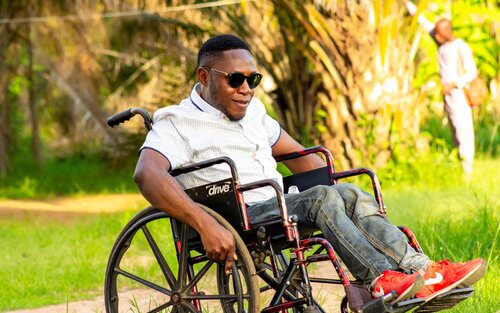As Kenya navigates through the second wave of the coronavirus pandemic, people with cerebral palsy are still heavily impacted by the virus.
This is according to Maria Njeri who runs The Njeri Maria Foundation, a non-governmental organization which focuses on advancing the lives of children and adults with cerebral palsy and their families in Kenya. Njeri, who also suffers from the disorder, says the pandemic has had both positive and negative effects on the lives of people with the disease.
Gains
According to Njeri, the work from home order issued by the government at the onset of the pandemic has meant that children get to spend more time with their parents and other siblings.
“Children who come from stable families have been able to spend more time with their loved ones, which is really good for their health and overall wellbeing. Sadly, the reverse is also true.” Implementation of social distancing as a containment measure of the virus has also led to an increase in telecounselling, teletherapy and teleconsulting.
“For us, we have seen an increase in the number of people we serve per day due to teleconselling. A simple ‘kabambe’ is actually very sufficient for us,” she said, adding they have noted a rise in the number of people seeking teletherapy services.
The increased use of such services has therefore meant that patients do not have to travel to seek such services as they can be able to access them from the comfort of their homes.
Negatives
Since the first case of the coronavirus was reported in Kenya in mid-March, many companies and businesses have been forced to issue layoffs as well pay cuts.According to Njeri, the massive job losses and reduced incomes have heavily impacted homes that have persons with disabilities, including those suffering from cerebral palsy.
She says that caregivers, especially mothers, who are mostly from poor backgrounds, have been left suffering due to the impact of the pandemic. “It is a known fact that most cerebral palsy patients come from poor backgrounds and reduced incomes and job losses and lack of jobs have really affected them.”
Available data indicates that in Kenya, up to 3 percent of the population is living with the disorder, which is largely attributed to brain damage at birth or at the first few weeks of birth.
A study conducted in 2016 by the Orion Foundation a nonprofit organization found that 91 percent of caregivers in the country for people living with cerebral palsy are mothers, and most must quit their jobs in order to provide care. The study also reveals that 44 percent of marriages in the country are negatively affected by the diagnosis of the disease in a child. 7 percent of fathers walk out.
“The pandemic has therefore left many parents, especially mothers struggling to do basic things for their children such as feeding their children as well as providing shelter for them.”
The Disease
The World Health Organization (WHO) defines cerebral palsy as a complex motor disorder at the level of the central nervous system. It is caused by irreversible brain lesions occurring before, during or shortly after birth.
“Everywhere in the world, out of every 1000 live births, between two and three babies will suffer from cerebral palsy,” WHO says. Experts say that the disease causes impaired and involuntary movement, can affect the ability to swallow, speak and control eye movements and can sometimes be accompanied by intellectual disability, blindness or deafness.

